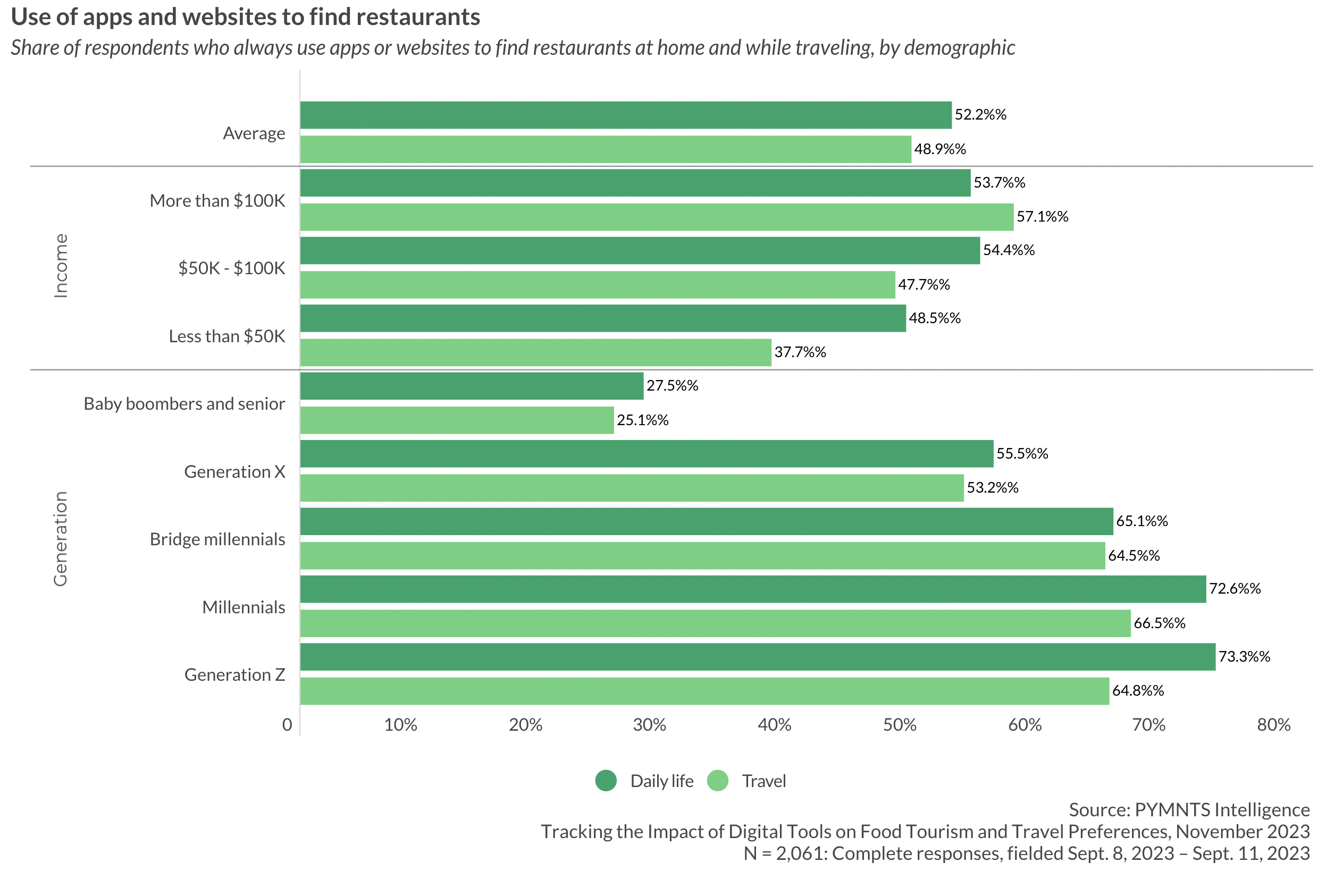
As restaurants look to reach tourists and travelers, PYMNTS Intelligence revealed that digital platforms can help them influence high-income diners.
The latest installment of the PYMNTS Intelligence Connected Dining series, “Tracking the Impact of Digital Tools on Food Tourism and Travel Preferences,” drew from a survey of more than 2,000 U.S. consumers in September. It sought to better understand how their dining habits differ while traveling compared to their restaurant habits at home.

The study found that, overall, consumers use apps or websites to find restaurants more often at home than while traveling, with 52% reporting that they always do so in their daily lives, while 49% said the same while traveling.
Yet, when it comes to high earners — those who make over $100,000 a year — more consumers rely on these digital platforms to find restaurants while traveling. Fifty-seven percent reported that they always do so while traveling, while 54% always do so in their daily life.
When consumers leverage digital platforms to discover restaurants, PYMNTS Intelligence indicated, Google is their top choice. According to the study “Connected Dining: Word of Mouth in the Digital Age,” 62% of consumers use Google to search for restaurants, a greater share than said the same of any other digital platform, and 51% of diners cited this as the single best platform for researching restaurant information.
Other popular platforms for seeking restaurant information are Facebook, which 52% of consumers use; YouTube, which 46% use; and Instagram, which 39% use.
“Obviously, a lot of restaurants are being searched for on Google, and [we enable] the customers who are searching for those restaurants to order directly on Google,” Vishal Agarwal, founder and CEO of order integration technology company ItsaCheckmate, told PYMNTS in an interview posted in October. “It’s an extremely effective way for restaurants to get direct orders from the customers who are searching for them.”